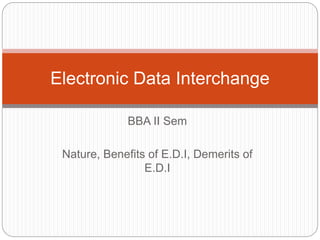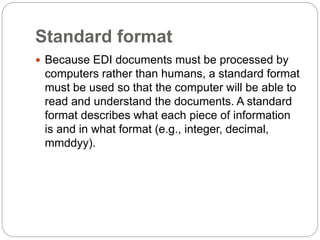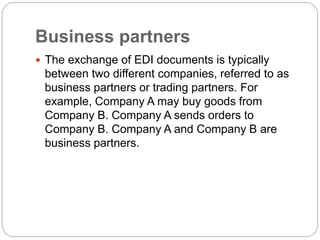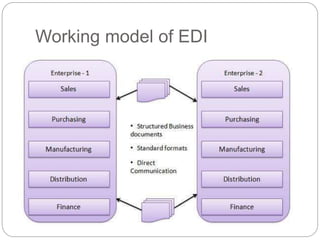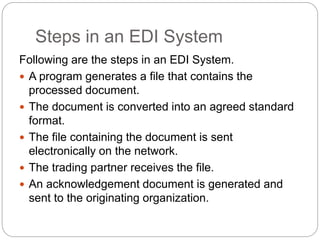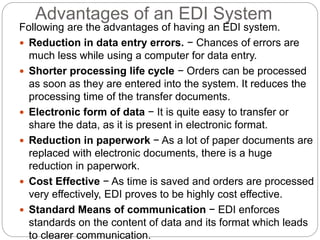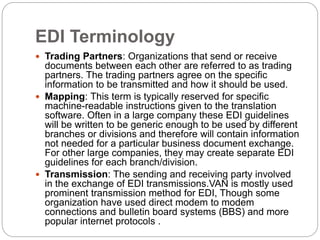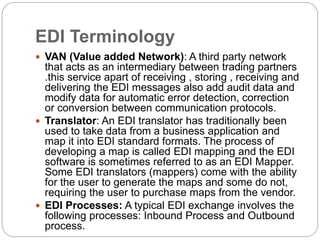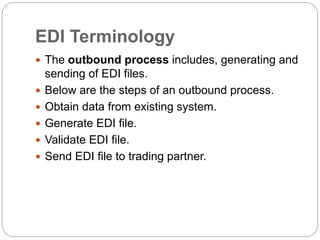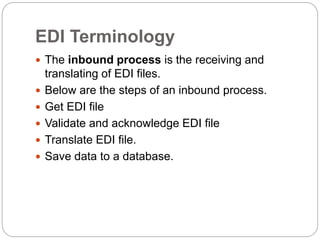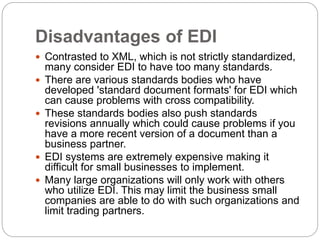This document discusses Electronic Data Interchange (EDI), including what it is, its benefits, and some terminology. EDI allows for the electronic exchange of standard business documents between companies in a computer-to-computer format. It provides benefits like reduced costs, increased speed, and fewer errors compared to traditional paper-based processes. However, EDI systems can be expensive to set up and maintain. The document also provides examples of common EDI documents and defines some key terms.
